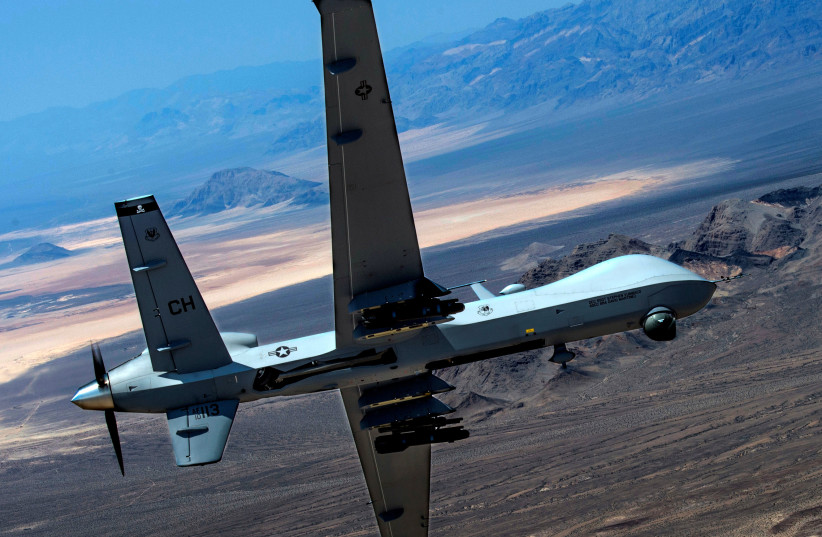Russian Ambassador to the US Anatoly Antonov has sought to bolster Russia’s position after Russian warplanes forced a US drone to crash into the Black Sea. The diplomat claimed on Wednesday that the drone was involved in reconnaissance data collection that is aiding Ukraine.
Russia’s invasion of its beleaguered southeastern neighbor over a year ago has exacerbated tensions with the West even further. Although such a drone flight is not a new thing, the US has flown such missions over the Black Sea for a while – and this incident raises the stakes.
In the past, large US Global Hawk drones have been involved in flights over the Black Sea and their paths can often be viewed online on open-source intelligence sites, and social media users often track them. This suggests that they are not doing anything particularly secret.
The Global Hawk is a large surveillance drone that looks a bit like a flying humpback whale. It has a range of some 14,000 miles and can stay airborne for almost two days.
The drone that was shot down over the Black Sea was an “MQ-9 Reaper.” This type often carries weapons. The Reaper, which has a 20-meter wingspan and can fly 1,800 km. at a speed of some 400 km. per hour, is a descendant of the “Predator” drone.

The Reaper is a classic drone and looks like many other types. Designed for efficiency, it can carry missiles as well as electro-optics and other sensors.
Russia's decision to intercept US drones is important
The Russian decision to harass, intercept or down the US drone is important. This is not the first time that planes have shot down drones. The Russians downed some in Georgia in the lead-up to the brief Russo-Georgian War of 2008 where Moscow used MiG aircraft for the kill. As drones usually fly relatively slowly, they can be downed by manned aircraft.
THE RECENT incident over the Black Sea is a preview of the drone wars that are emerging globally.
For instance, Russia has been importing Iranian suicide drones to strike Ukraine, which has used air defenses to shoot down many of them. Iran has also exported drones in Yemen and has helped the Houthis there shoot down Saudi drones. Drones were also used in the Libyan civil war and in the conflict between Azerbaijan and Armenia.
It’s important to differentiate between some of the types of drones being used. US-made drones tend to be large and expensive. The MQ-9 may have cost around $30 million, about the same as the Sukhoi-27 fighter jet that is thought to have downed it.
When drones were first developed and used by Israel in the 1980s and then in the US in the 1990s, they tended to be used for “dull, dirty and dangerous” missions. This means they can do the work that air forces don’t want their pilots to do, and when they get shot down or have mechanical problems, they can be lost and no one will be harmed.
Today, as more countries and groups acquire drones, there is an arms race to develop not only smaller drones but also to make them cheaper and expendable. This is why the Iranian shoot-down of a Global Hawk in 2019 was devastating, because it came at a cost of more than $100 million for the US, and much less for Iran.
By contrast, the complex systems needed to down cheap Iranian kamikaze drones can mean that the interceptors cost more than the drones.
The war of words between Moscow and the US over the Black Sea incident is important because it shows that both countries are jostling for control of the airspace off the coast of Crimea.
Moscow’s claims that Washington is using drones to supply Kyiv with intelligence means Russia is upping the rhetoric and laying out a case to potentially confront more American drones. On the other hand, the US decision to send Reapers over the Black Sea also shows a different type of strategy to using Global Hawks, which have been the usual drone of choice for Black Sea missions.
The increasing clashes with drones illustrates not only how tactics change but also the limitations of using such aircraft, which are relatively slow, in an area where manned aircraft are common.
